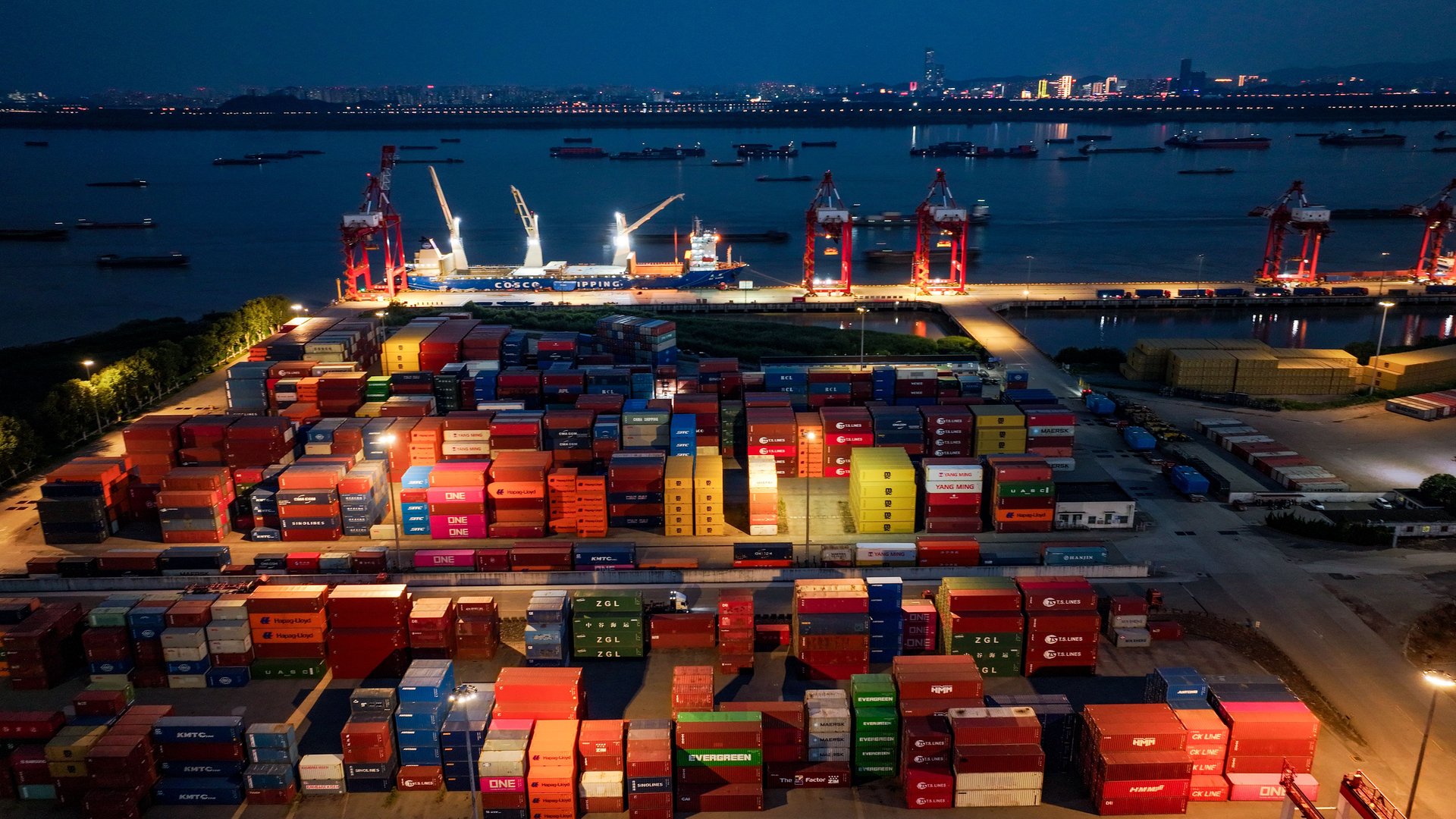China's exports are booming despite Trump's tariffs. What's behind the numbers
If Trump’s goal was to isolate and weaken China, the latest export numbers suggest the opposite may be happening

Qi Liguang/VCG via Getty Images
China posted a record $586 billion trade surplus in the first half of 2025, defying expectations as factories appeared to ride out President Donald Trump’s tariff threats. June exports rose 5.8% year-over-year, well above forecasts, as Chinese companies shifted sales to markets outside the U.S.
What's behind the rise? The numbers tell a complex story.
Sharp divergence in the data begs questions
On the one hand, there’s little question that U.S trade policy under the Trump administration is significantly disrupting global flows. U.S. ocean imports from China fell almost 30% in June, according to Descartes, a supply chain data firm. That steep drop followed a rush of front-loaded shipments earlier in the spring.
Such a drop would be significant with any major trading partner. But China exports more to the U.S. than virtually any other country, and ocean-shipped goods account for almost two-thirds of China-U.S. flows. So the fact that China’s overall export numbers continue to surge – rising almost 6% amid tensions with the U.S., its most significant trade partner – is eye-catching.
Evidence for rise in 'transshiping' is mixed
One reason for the rising export numbers could be diversion: Chinese goods being rerouted through countries like Vietnam, Thailand, or Indonesia. And it’s true these nations have seen export spikes, even as U.S. imports from China collapse. In fact, the June export numbers included a 17% jump to ASEAN members – with Thailand, Malaysia, Indonesia, Cambodia, Laos, Vietnam, Myanmar, Brunei and the Philippines among them.
But China’s exports to ASEAN have been rising sharply for several years, driven by regional agreements, shifting supply chains, and genuine end-use, in-country demand — especially as Southeast Asia becomes a global manufacturing hub and consumer in its own right. The 17% jump in June fits within that broader trend and isn’t, on its own, strong evidence of transshipping. Thus the figure could simply reflect normal trade growth, especially as China’s shipments to other non-U.S. major partners across the globe increased quickly, too.
The Trump administration, however, has cited transshipping concerns to justify new tariffs. Its latest trade letters include a 40% duty on goods it deems rerouted — double the rate applied to some direct exports. In the case of Vietnam, the White House claims that 40% of exports to the U.S. are disguised Chinese goods. But experts say that figure is difficult to verify and likely significantly inflated.
Trade specialists also warn that without a transparent standard — typically determined through detailed “rules of origin” — enforcement becomes messy and the risk of overreach grows. “Transshipment” could end up covering legitimate Chinese inputs used in regional manufacturing, not just relabeled goods aimed at skirting tariffs.
In that case, the consequences could be broad. Targeting these flows could increase prices for U.S. consumers and complicate already-fragile supply chains, all the more so if the rules shift faster than companies can adapt.
Could U.S. tariff policy be benefitting China?
Another possibility for booming Chinese exports: U.S. policy may be, in effect, helping China. By targeting a wide swath of countries with tariffs — not just China but also longtime allies like the E.U., Mexico, Japan, and South Korea — the Trump administration may have created an incentive for other countries to deepen trade ties with Beijing, effectively creating more demand for Chinese goods, not less.
Similarly, a recent Invesco survey found that almost 60% of global sovereign wealth funds plan to increase their investments in China over the next five years, citing the country’s strength in advanced tech and clean energy. That's a sign geopolitical headwinds may be pushing capital toward, not away from, Beijing.
If so, such an outcome would be ironic. If Trump’s goal was to isolate and weaken China, the latest export numbers suggest the opposite may be happening.
